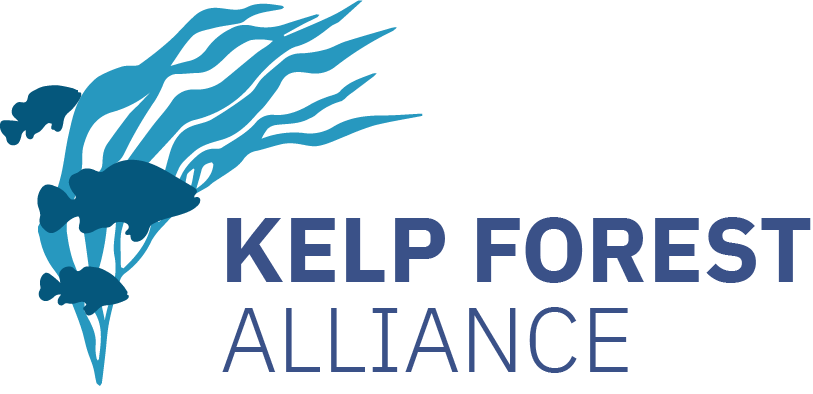Key takeaways
Collaboration and communication among managers, fishers, researchers, and the community enabled adaptive management and modifications to ongoing urchin harvest activities in order to facilitate kelp recovery.
Commercial urchin divers were used to reduce urchin densities to <2 /m2, and initial evidence suggests signs of kelp recovery.
Background
Bull kelp (Nereocystis luetkeana) is the foundation species of the nearshore kelp forest ecosystem along California’s North Coast 1. Between 2013 and 2020, a combination of oceanographic and ecological stressors led to unprecedented declines of over 96% of bull kelp canopy and habitat across much of the 350 km region 2 3 4. Stressors included elevated water temperatures, potentially increased recruitment of native purple sea urchins (Strongylocentrotus purpuratus), and the absence of urchin predators (Okamoto et al. 2020). The near extinction of sunflower sea stars (Pycnopodia helianthoides), beginning in 2013 due to sea star wasting syndrome, compounded the loss of sea otters (Enhydra lutris) extirpated around the mid-nineteenth century. This rapid and expansive decline of kelp severely disrupted ecosystem functions and services leading to the declaration of a federal fishery disaster for the region’s valuable commercial red sea urchin (Mesocentrotus franciscanus) fishery in 2015-2016 and the closure of a $44 million USD recreational red abalone (Haliotis rufescens) fishery in 2018 (Rogers-Bennett and Okamoto 2020). Persistent high densities of purple sea urchins continue to suppress kelp recovery in the region, despite marine heatwave conditions subsiding (McPherson et al. 2021).
The project
In order to create a network of bull kelp refugia to create habitat, preserve genetic diversity, and maintain spore sources to facilitate broader bull kelp recovery (Hohman et al. 2019), local communities and state agencies began exploring opportunities to address kelp forest loss in the region. In early 2020, the Mendocino Kelp Forest Restoration Project (KFRP), managed by the non-profit Reef Check Foundation and the California Department of Fish and Wildlife, was designed to evaluate the feasibility of such a management approach by reducing urchin grazing pressure, with key objectives being: 1) reducing urchin density at restoration sites to <two urchin/m2 by working with commercial urchin divers to harvest urchins; and 2) accurately documenting cost/benefits of removals to assess potential scalability. This project is being leveraged by collaborators from other institutions to further enhance understanding of kelp restoration practices and ecosystem outcomes including evaluating kelp outplanting methods as an approach to restoration (Moss Landing Marine Lab); investigating the effects of kelp on modulating current and wave hydrodynamics (University of California Davis); and exploring the utility of high-resolution aerial drones for monitoring canopy cover recovery at restoration sites (The Nature Conservancy). Importantly, project partners from the community have generated education and outreach materials, including classroom materials, public exhibits, and presentations to disseminate information on kelp forest ecology, drivers of kelp decline, and ongoing restoration efforts. The California Ocean Protection Council provided $617,000 USD of funding over 1.5 years for the KFRP, with The Watermen’s Alliance, a non-profit sport diver organization, contributing an additional $60,000 USD. Funding was allocated approximately evenly between urchin removal efforts and scientific monitoring and outreach.
The project targets two restoration sites in Mendocino County—Noyo Harbor and Albion Cove—each approximately four hectares in size and ranging from 2-15 m in depth. Restoration sites were selected (1) to be adjacent to remnant kelp patches in order to maximize protection of existing kelp and enhance potential natural recolonization of the restoration site; (2) to minimize urchin encroachment after removals; (3) to have historic persistence of kelp; and (4) to be accessible for divers. To understand ecological impacts of the restoration activities, the algal, invertebrate, and fish communities at the restoration sites, as well as unmanipulated control sites, are monitored using fixed transects and Reef Check California’s monitoring protocol. A Before-After-Control-Impact study design is being used to evaluate the outcomes of the restoration efforts based on the monitoring data. To understand the effects of restoration activity on urchin biology at the sites and evaluate the effectiveness of removal techniques, gut content, reproductive potential (gonad weight), size-frequency, and bycatch of harvested urchins are also monitored.
To deploy divers efficiently, restoration sites were demarcated with a 150 m benthic cable using markers every 10 m that could be referenced when coordinating urchin and research divers. Commercial divers were then asked to run meter tapes from assigned markers perpendicular to the benthic cable (creating “swim lanes” or “cells”) to systematically remove urchin from targeted areas and report distance of area cleared. Research divers then performed quality control surveys to capture urchin densities within “cells” to best guide removal efforts. Combining fishermen’s observations with almost real time information on urchin distribution and density allowed project managers to systematically guide commercial dive efforts and improve diver accountability.
Efforts to remove purple urchin at Noyo Harbor began in August 2020, and the season concluded in November 2020. Within this time, purple urchin density was reduced to 40% of pre-restoration levels, representing over 11,800 kg in purple urchin wet weight. Across 49 individual diver days (two divers/vessel), the target threshold of two purple urchin/m2 was achieved. However, when combined with red urchin, the total urchin density exceeded 2 urchin/m2, potentially hindering kelp recovery. Divers were able to harvest approximately 453 kg of legal-sized red urchin from the site; however, urchin size-frequency surveys indicated most red urchin at the site were of sub-legal-size class and not commercially harvestable, necessitating an adaptive adjustment in our approach to further reduce all urchin densities.
This project is ongoing, and quantitative results on broader ecological responses of the grazer reduction efforts are currently being published. Anecdotally, young kelps began to appear at the site within weeks of beginning urchin removals. In some areas within the restoration site, kelp individuals reached the surface and were reproductive by May 2021. Kelp canopy has increased between survey dates, and quantitative results are pending.
Lessons learned
Engaging with diverse management, scientific, and community partners early in the process resulted in a project that addresses necessary technical and regulatory considerations but also identifies important local perspectives on project goals and approaches and builds trust. For example, monitoring data indicated red urchin removal was necessary to reach the project goal of <2 urchins/m2. Collaborative dialogue with commercial urchin divers affiliated with the project, who rely on red urchins for their livelihoods, resulted in adaptive solutions to red urchin removals that were in alignment with both project and partner goals. Solutions included adjusting the location of a proposed restoration site to avoid an area with known high red urchin density and translocating red urchins from restoration sites to appropriate locations via a scientific collection permit, rather than sacrificing them. In continuing this approach throughout project implementation, adaptive changes were made transparently, driven by project data where possible, and included consultations with all partners. Although this approach sometimes reduces the speed of decision making, it is important for maintaining positive collaborative relationships.
References
McPherson, M.L., D.J.I. Finger, H.F. Houskeeper, T.W. Bell, M.H. Carr, L. Rogers-Bennett, R.M Kudela. 2021. Large-scale shift in the structure of a kelp forest ecosystem co-occurs with an epizootic and marine heatwave. Communications Biology. 4:298 doi:https://doi.org/10.1038/s42003-021- 01827-6
Hohman, R., Hutto, S., Catton, C. and F. Koe. 2019. Sonoma-Mendocino Bull Kelp Recovery
Plan. Plan for the Greater Farallones National Marine Sanctuary and the California Department of Fish and Wildlife. San Francisco, CA. 166 pp.
Okamoto, D. K., S. C. Schroeter, and D. C. Reed. 2020. Effects of ocean climate on spatiotemporal variation in sea urchin settlement and recruitment. Limnology and Oceanography 65:2076-2091.
McHugh, T.A., Abbott, D. & Freiwald, J. 2018. Phase shift from kelp forest to urchin 1418 barren along California’s North Coast. www.reefcheck.org; Western Society of Naturalists; Hohman et al 2019
Rogers-Bennett, L. and C.A. Catton. 2019. Marine heat wave and multiple stressors tip bull kelp forest to sea urchin barrens. Scientific Reports. 9:1–9.
Rogers-Bennett, L., and D. Okamoto. 2020. Mesocentrotus franciscanus and Strongylocentrotus purpuratus. Developments in Aquaculture and Fisheries Science. 43:593-608.
Springer, Y.P., C.G. Hays, M.H. Carr, and M.R. Mackey. 2010. Toward ecosystem-based management of marine Macroalgae—The bull kelp, Nereocystis luetkeana. Oceanography and Marine Biology: An Annual Review, 48, 1-42.




